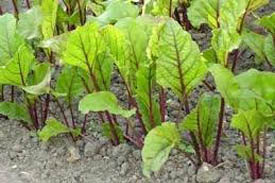Honeybee sightings March 2, 2014
This was a rare treat after 4 years of no honeybees in this area. This morning in our breakfast nook we noticed a few honeybees digging in the bird feeder dust. Ah Ha! They were looking for pollen (substitute) that I have discussed many times before in previous articles. Time to provide more feed.
Diane cut open a fresh bag of milled corn meal, fine quality, and I placed about a cup or two of the fine corn meal on the flat shelf of the bird feeder. They dove in and some flew off to “waggle dance” showing where pollen could be found. This implies that they have started prepping up for the queen to lay eggs. This is exciting.
Unfortunately though these next few days there will be another winter storm, but there are bees about and if you have beehives, or just bees on warm flight days, you have to provide food or they will starve out. I am assuming you were feeding them in the bleak of winter too.
This positive sighting gives me encouragement to get started on building my new design garden bee houses. I am forbearing the conventional Langstroth hive-since I do not need to gather honey- and constructing what I call “Garden Hives”, designed for bees by a bee brain with 50 years experience in bees to pollinate my garden, and keep the surrounding acreage alive with busy pollinators.
The weather rock calls for ice, snow and sleet, which means no driving for me. As soon as the weather clears I will pick up my boards and start assembling my Garden Hives. I am starting this experiment with two constructions that hopefully encourages a bee swarm this warm weather. There is a new product in the bee literature-a bee attractant pheromone- that may induce them to stay. I think the older method of just putting up a good house will do the trick, but then again I am not against science.
Honeybees prefer to be a bit high up-at least off the ground, so I will mount my Garden Bee homes base about 4 feet high. At the top I will be able to remove the cap for winter feeding. I will have to use a ladder, as the total height is about 8 feet up. In this scenario some beekeepers place hives on roofs. In Germany I saw hives built into upstairs windows. German people love bees.
Do review my previous articles on honeybees paying special attention to feeding and throwing away the queen bee excluder.
Eventually I will have some pictures for you, maybe this summer.
God Bless Mother Natures will to survive.
Old Timer,
COPYRIGHT: Back2theLand.com, March 2014, all rights reserved




June 12, 2015 @ 10:26 am
I have been raising a backyard garden for a few years now. We have all heard about Honey Bee Colony Collapse Syndrome by now. Probably the average person doesn’t get the true significance of this problem, since they don’t see the immediate results first hand. The go to the grocery store and see plenty of food there. It’s another thing if your a farmer or gardener. Last year my garden produced a bumper crop for me. There were honey bees everywhere when the cucumbers were blooming and they were very prolific. This year I have been looking for honey bees and in the last month I have only see about 4 bees and they weren’t all on the same day. I have Zucchini, Cucumbers, Tomato’s, Straw Berries, and several other garden veggies that produce nice blooms, like peas and beans. I would think this should attract many bees but they are just not there. I fear we are in big trouble here in America and I don’t believe the average person realizes they can do something about this problem. For one thing they could use a lot less pesticides and herbicides on they property. Also, we all need to educate ourselves about Honey Bee Health. The more we understand what Honey Bees need to survive the better off we will all be. If you have the desire and the location, maybe you could even learn how to raise bee’s yourself. These are just a few of my thoughts about the protection of our food supply. We need Bees and Bees need us.